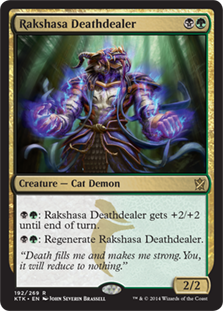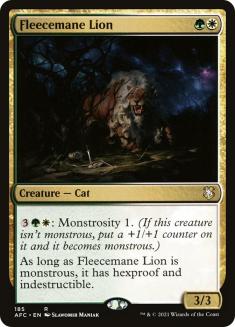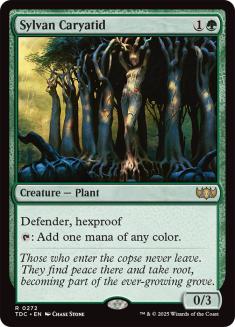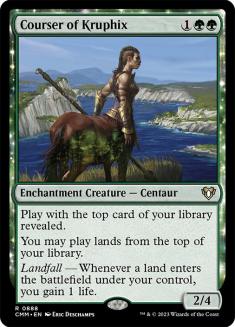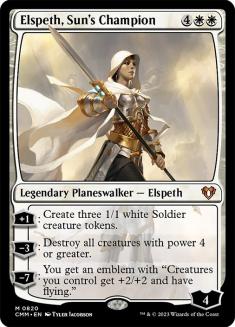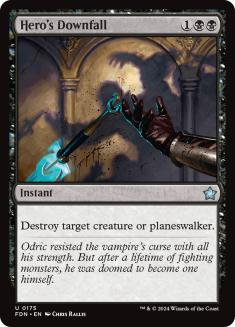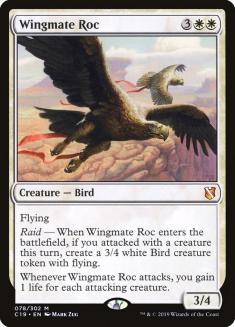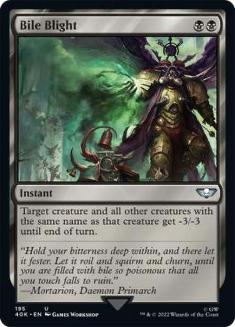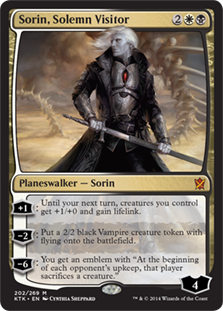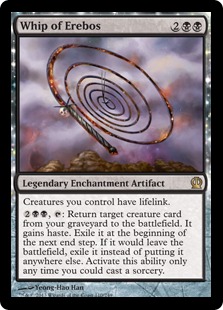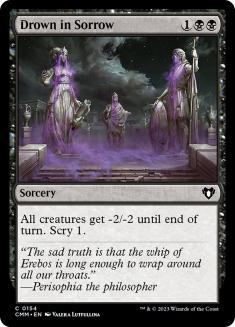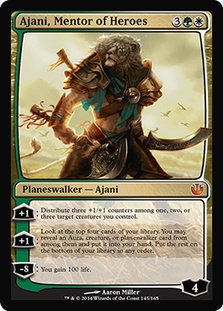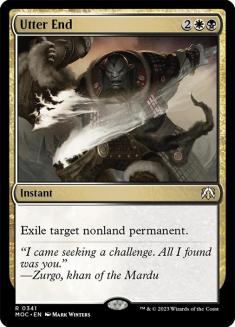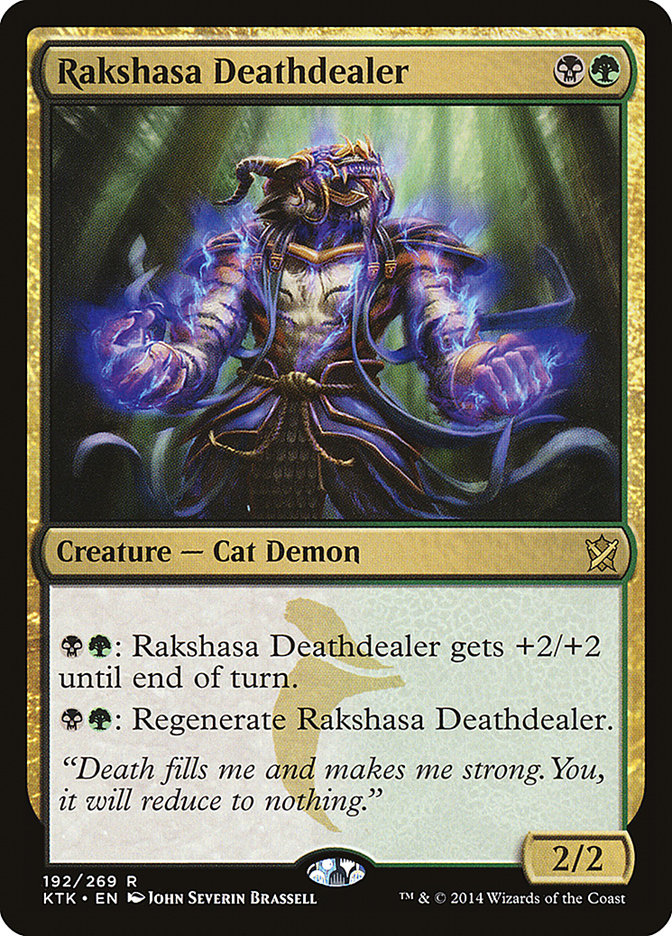So, this last weekend, while everyone else in the country (or at least 4,000ish people) went to New Jersey, I resolved to stay in the Midwest and attempt to chase down one of the few remaining slots left in the PTQ season. There were two options: one near Detroit on Saturday, and one in Minneapolis on Sunday.
I live in the middle, in Madison, about four hours from Minneapolis and seven or eight from Detroit. I was resolved: I was going to pull a Dave Price, and road warrior this weekend. I was going to gun it to Detroit (Flint, technically), and if things didn’t go well, gun it back, ten hours to Minneapolis.
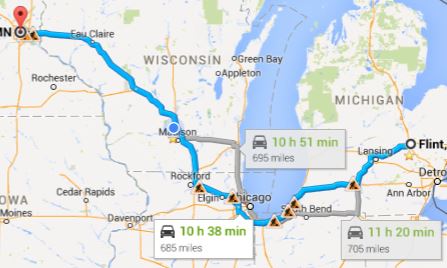
It was crazy, but that was the plan.
I had a place to stay in Detroit, and my thinking was that as soon as I was no longer in contention, I’d leave.
Brian Kowal talked some sense into me. “C’mon, man,” he said. “There’s an IQ in Minneapolis on Saturday. Come up, take the paycheck on Saturday, then try for the slot on Sunday.”
This started the process of me reconsidering. It really concluded when I thought about sleep. If I didn’t do well in Michigan, I’d have to jack myself up on caffeine, then somehow manage to sleep when I arrive. I’d need to get to sleep by about 1 am at the worst, which would mean, including time zone change, I’d have to leave the PTQ in Michigan by about 3. In other words, I’d have to be out of contention by round four for that to make sense. It’s not much of a thing to plan on.
I decided to hit the SCG IQ in Minneapolis, then hit the PTQ.
The Winning Deck
I know a lot of people have asked to see my current version of U/B Control. It is only about four cards different in the whole 75 than when I last wrote about it. If you like U/B Control, or control in general, I think the current build is the best deck in Standard.
However, I didn’t win the IQ. I was defeated in the finals by this deck:
Creatures (20)
- 4 Sylvan Caryatid
- 3 Fleecemane Lion
- 4 Courser of Kruphix
- 3 Wingmate Roc
- 2 Rakshasa Deathdealer
- 4 Siege Rhino
Planeswalkers (5)
Lands (25)
Spells (10)

The first game was a close affair, and I barely took it down. The last two games were fairly anticlimactic: I got stuck on two mana and stayed there, and Daniel eventually won. The games were broadcast, but they aren’t currently available online. You can see Daniel’s deck in action here, in game 3 of the quarterfinals:
Watch live video from LegionGamesMN on Twitch
When he was playing me, I remember being really struck by the deck. It was unusual, in part because it had this set of cards in the main deck:
We’ve seen Abzan decks that focused on the lower part of the curve (the Abzan Aggro list run by Mike Sigrist, with no Courser of Kruphix) or the higher part of the curve (the Abzan Midrange deck designed by Steve Rubin and piloted to victory by Ari Lax, with no aggressive cheap creatures). This deck ran both sides.
Running both the “top” and the “bottom” end of a deck is often a really bad call, but it isn’t always. By “top and bottom,” what I mean is, low cost aggressive cards in combination with high cost cards and more controlling elements. In essence, making an aggro deck more midrange (but not in whole) or making a midrange deck have an aggro element (but again, not in whole). In the last few years, I’ve tended to call these decks “schizophrenic,” because they are of two minds. That doesn’t necessarily mean that they are bad, however.
For Pro Tour Theros, Adam Jansen and Ronny Serio played a Red Aggro list that splashed white that ran this “top and bottom” configuration, starting with one-drops and ending at Stormbreath Dragon. I updated the list getting an SCG Open Top 8, a $5K win, and several other cash victories. Here is that list, as of SCG Milwaukee in 2013:
Creatures (24)
- 4 Chandra's Phoenix
- 4 Ash Zealot
- 4 Rakdos Cackler
- 4 Boros Reckoner
- 4 Stormbreath Dragon
- 4 Firedrinker Satyr
Planeswalkers (2)
Lands (25)
Spells (9)

(A quick note: by Columbus, the sideboard was cleaned up to remove Frostburn Weird in favor of more removal.)
This deck was at its peak before the real emergence of the latter-day Mono-Black Devotion lists. Esper was still big, and Mono-Black only ran two or so Pack Rats. In Columbus, the day of my $5K win, I basically smashed everyone, and in between rounds, playtesting with Melissa DeTora, I was losing most of my game 1s to her Mono-Blue Devotion deck and winning nearly all of the sideboarded games. It felt like the deck for that moment.
But, why?
One of the things that the deck was able to do was it was able to put down a consistently aggressive start, enough to make the other person be in a defensive stance. Even though the top end of the deck did slow the deck down, it provided more of a second-wave of aggression. If things weren’t going well, Stormbreath Dragon and Chandra, Pyromaster could bring a second angle that another, smaller red deck simply didn’t have access to. Boros Reckoner, not the most impressive of aggressive cards, still provided another confounding angle of damage, and the combination of these two things was just more powerful than a deck that was all small (like Boss Sligh, a good deck in its own right, which practically debuted in Columbus) or a deck that eschewed the low end altogether and was simply Big Red.
Let’s contrast this with a schizophrenic deck that did this poorly:
I remember watching this match play out live. Bob Maher is a friend (and my boss), and I wasn’t sure what he was going to be playing. I’d given him the same six or so decks I gave to Matt Sperling (U/W Control was my number one pick, followed by Burn), and I’d even given him a red aggro list, though I wasn’t excited by it. I knew he was working with Team Channel Fireball, and pretty quickly I thought, “Oh, no. What is happening?”
Here is the list, as played by Eric Froehlich, the top finisher with the deck:
Creatures (28)
- 3 Chandra's Phoenix
- 4 Rakdos Cackler
- 4 Burning-Tree Emissary
- 4 Firefist Striker
- 4 Foundry Street Denizen
- 1 Rubblebelt Maaka
- 4 Firedrinker Satyr
- 4 Mogis's Warhound
Lands (21)
Spells (11)

To me, this deck looks like it was built by a very good deckbuilder who doesn’t build red decks. This is a deck that slows down game 1 to cast Chained to the Rocks, hurts itself a lot with its lands in a world where that might matter, and isn’t maximizing the explosive draws it could give itself. When you are playing Foundry Street Denizen, slowing down isn’t a thing you want to do; if you have a problem that Chained to the Rocks is there to solve, the answer is to come at it sideways (don’t answer the problem, create a problem) or try a new deck entirely. In my data analysis of that Pro Tour, I note that Froehlich was the only one playing this deck who made the top of the field, but that the success of Red Aggro can actually be given to Team Revolution: Rabble Red was one of the most successful events of the Pro Tour and entirely responsible for the success of Red Aggro strategies at the event.
The slowing down of the Channel Fireball Red deck failed because it failed to bring a new angle to the deck; rather it just watered the deck down.
Sometimes, you’ll hear Patrick Sullivan talking about why he doesn’t like Pyroblast in Burn in Legacy. The big reason is that in such a linear, underpowered strategy, he doesn’t want to go off strategy at all if he can help it. While I’m not sure that is specifically correct in Legacy Burn (it may be), I do know that he feels this way because it is usually the case for underpowered linear decks. They win because they push an angle. Stop pushing that angle, even a little bit, and you open up the door. Eric’s own testimony speaks to the underwhelming nature of this deck: “You would beat anyone who stumbled and win virtually every game where you drew very well […] However, if they drew decent and wanted to beat you, they would.” Hmm.
So, when is a deck that is schizophrenic good, and when is it bad?
The answer is in how well the deck’s two plans can work together. Where both of the previous red decks were decks that were shifting their deck up, Daniel McNamara’s winning IQ deck is shifting his deck down. Fleecemane Lion, for example, is a card that was included in many Abzan Midrange lists, including one in the Top 8 of Honolulu:
Creatures (21)
- 4 Sylvan Caryatid
- 4 Fleecemane Lion
- 4 Courser of Kruphix
- 1 Anafenza, the Foremost
- 4 Wingmate Roc
- 4 Siege Rhino
Planeswalkers (2)
Lands (25)
Spells (12)

Comparing Daniel’s deck to Thiago Saporito’s, they have a lot in common. Daniel shifts the deck into being a bit more proactive, with more emphasis on putting things to his opponent than on solving problems.
For spells, Daniel removes:
He replaces those cards with:
When I look at it like this, I can see the role of one card in the deck, in particular, as being very impressive:
It is absolutely the case that an early Deathdealer can make a game go badly wrong for an opponent. That combined with four other early aggressive drops can create more situations where Siege Rhino is acting more like a Geralf’s Messenger and less like an Obstinate Baloth.
At the same time, if the game is going slower, a lategame Rakshasa Deathdealer can be an incredible threat or an incredible defensive card, all by itself (well, itself, and the mana you’ve drawn). Daniel places his more specific “answer” style cards in the sideboard, relying on the catch-alls of Thoughtseize, Hero’s Downfall, and the single Utter End to interact with the opponent, and mixed-use cards like Elspeth, Sun’s Champion and Abzan Charm to be either answers or more power.
When Daniel McNamara beat me in the finals of the SCG IQ in Minneapolis, I thought he was piloting a deck that was just fundamentally flawed. In my head, I saw him running 4 Fleecemane Lion, 4 Rakshasa Deathdealer, and 4 Sylvan Caryatid. Making room for that much aggression, combined with the midrange nature of Abzan, would have been a flawed path, watering down your midrange power too much in favor of an aggressive Plan A that didn’t have enough Plan A to really make that happen.
That’s not what Daniel did though. He kept the midrange elements of his deck solid, but supplied just a touch of aggression to open up the possibility of stolen wins while leaving the Plan A intact. Even better than that, he took the heart of Thiago Saporito’s deck from the Pro Tour, and in my opinion, improved it by making it have the ability to back up an aggressive opening with more proactive cards. His secondary plan is actually in accord with his first. In this case, the cards themselves that he uses to accomplish one can also accomplish the other. In the case of the R/W Midrange Aggro deck I played successfully, it was slightly different: the secondary plan could carry on the primary plan, but do it from another angle, and it was helped into position by the primary plan.
I still would have loved to have won the event instead of losing in the finals, but I think the deck I lost to is a worthy one. Great work Daniel, and congratulations on winning the SCG IQ!
Denoument
It’s been a great month for Madison Magic. For the third midwest PTQ in a row, Madison took it down. Matt Severa won the PTQ by Gnome Games in Green Bay, Justin Cohen won the PTQ by Misty Mountain Games in Madison, and now David Heinemann won the PTQ by Legion Games in Minneapolis. In between that, Matt Severa, Sam Black, and Gaudenis Vidugiris (formerly of Madison) got Top 4 in GP Nashville, and I won the Super Sunday Series in Nashville.
This weekend is my last chance to win a PTQ for the next Pro Tour. I’ll be playing in a PTQ in Chicago by Pastimes. I’d be happy if anyone from Madison won, but I have to tell you, I really want to win.
I plan to do my best to crush it. Wish me luck!

